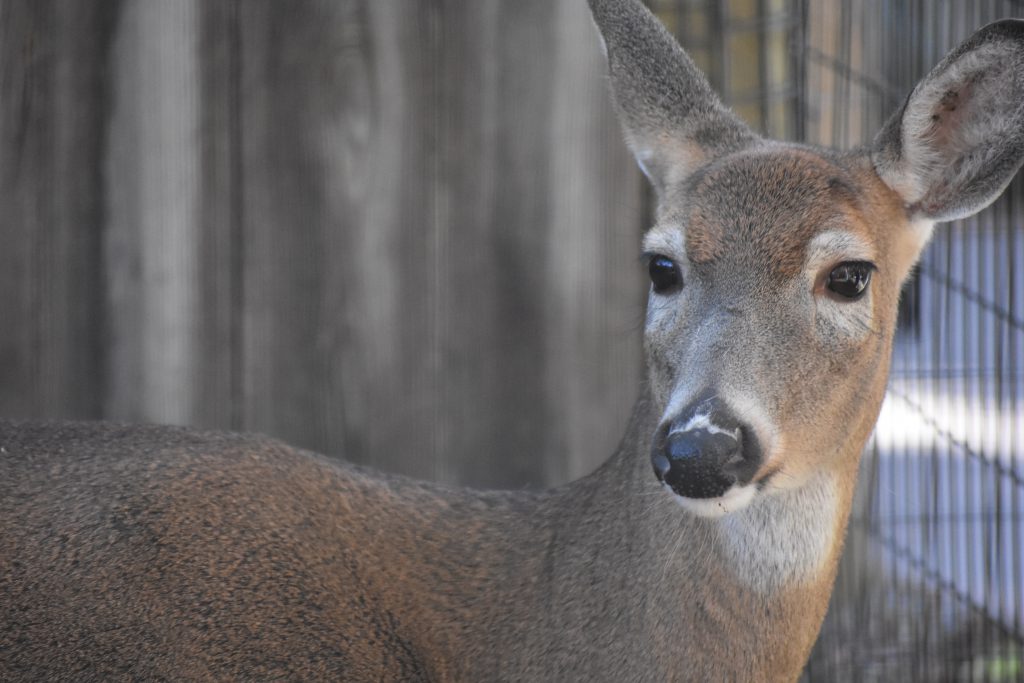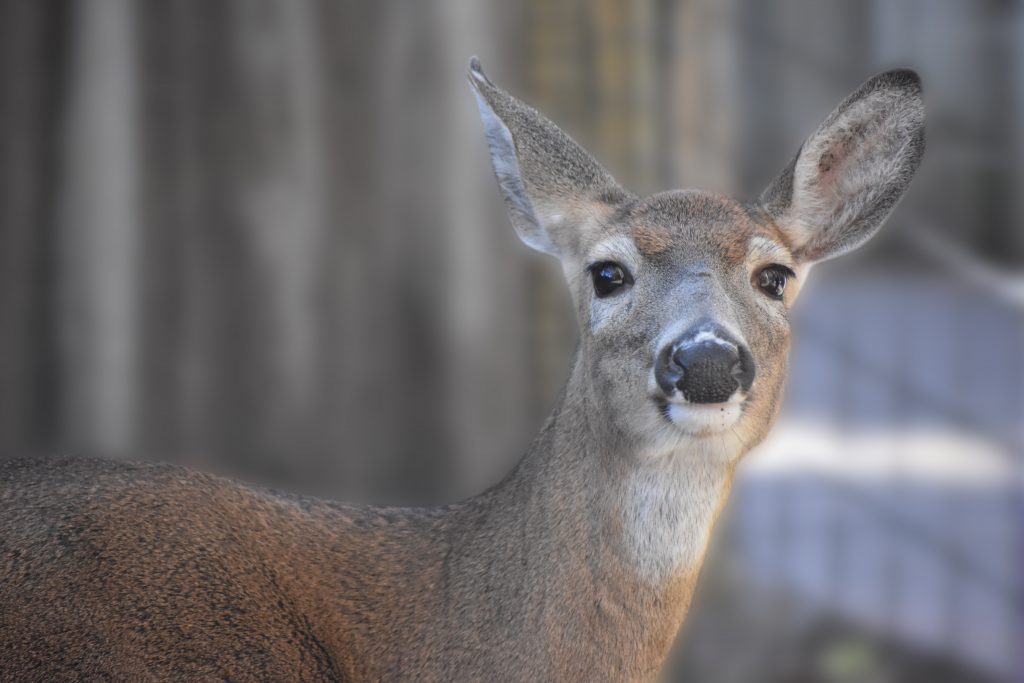Odocoileus virginianus
Mammal | Most of southern Canada, United States, Central America


Animal Info
Melinda, our white-tailed deer, was thought to be abandoned as a fawn. Friendly people took her in and raised her, with the intention of releasing her back into the wild. Unfortunately, she was imprinted on people, meaning that she thought humans were the BEST… which can be dangerous for a deer. Because she could not safely live in the wild, the Zoo offered to provide sanctuary for her at the Zoo.
White-tailed deer are the shyest, most skittish of the deer. They are remarkable swimmers, often going into large bodies of water to escape terrestrial predators and bothersome insects, or to reach remote islands with potentially untapped food resources.
Their characteristic white tail makes them very easy to see as they run away. White-tailed deer are able to run at speeds up to 30 mph through tangled terrain in a forest.
Diet
In the wild: Buds and twigs of maple, sassafras, poplar, aspen, birch, shrubs, huajillo brush, yucca, prickly pear cactus, comal, ratama, conifers
At the Zoo: Mazuri browser maintenance, llama diet high fiber, hay, alfalfa cubes, apples, carrots
Habitat
Big woods, deep saw grass, dense thickets, hammock swamps, farmlands, brushy areas, cactus and thornbrush deserts
Conservation Status
International Union for Conservation of Nature (IUCN) – least concern
